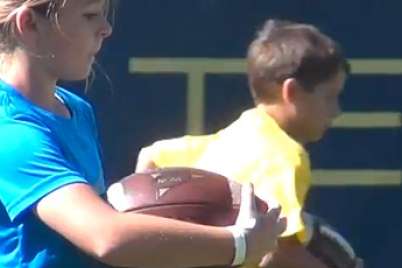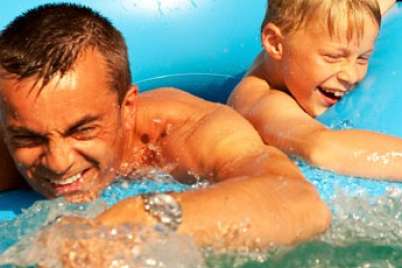
How to support your child with special needs to develop physical literacy
Childhood is a time of exploration and discovery. It’s a time of skinned knees and bruised elbows, of sports injuries and bicycle crashes. In other words, it’s a rough-and-tumble time of life. Amid all those slips and spills, there’s great fun, and the carefree joy of childhood.
Above all, there are invaluable life lessons to be learned. You learn you can be hurt and still get up, dust yourself off, and move on. You also learn self-confidence: that you’re stronger, quicker, nimbler than you might ever have imagined. This is what it means to develop physical literacy, which can open up an entire world for children, helping them to cultivate a healthy, happy, and physically active lifestyle.
Physical literacy for children with disabilities
For children with disabilities, developing physical literacy may pose more of a challenge than for children without. Parents and caregivers may fear the possibility of injury, while conditions such as cerebral palsy or spina bifida may impact children’s gross and fine motor skills. Nevertheless, developing physical literacy is just as important for children with disabilities as it is for those without.
As children with disabilities develop physical skills, they build their self-efficacy and self-esteem. For a child who may have difficulty walking or speaking, learning to hit a baseball or throw a Frisbee can be a profound morale boost, as they realize and build their capacities to control their own bodies and the physical world around them.
Indeed, this premise that children learn best through doing lies at the heart of experiential learning theory. With experiential learning, you don’t just tell children what they need to know. You give them first-hand, hands-on experience with whatever it is they may need to learn.
For children with disabilities, especially those who may have challenges with reading, writing, or attention, getting them away from screens, off the couch, and into the outdoors can be a perfect strategy for helping them to learn about the benefits of a physically active lifestyle.
Children who have orthopedic or musculoskeletal disorders, for example, may benefit from swimming lessons or water aerobics. Likewise, children with cognitive or developmental impairments might benefit from a daily nature hike, in which they not only learn about their physical environment but about how to manage the physical demands of such an activity.
In any case, through such activities, children with disabilities can realize the proficiency and power of their own bodies. They can experience the pleasure of physical activity, as well as the increased sense of well-being that comes with an active lifestyle. And they can learn that they do have a significant measure of control over their own body, its strength, stamina, and capabilities.
Team spirit
Children with disabilities are not limited to developing physical literacy through solo activities. Group activities can be an ideal way not only for children to develop physical and motor skills, but also their social and communication skills.
Team sports and performing arts groups, such as baseball and soccer clubs or dance and cheerleading troupes, can be a great way for children with conditions ranging from Down syndrome to muscular dystrophy to develop physical literacy while interacting and having fun, with their peers.
Likewise, children with autism, even those who are non-verbal, can thrive in team sports, provided the activity is suited to the child. For example, swim or track and field teams offer an ideal combination of group interaction and solo activity.
The takeaway
Every parent wants their little one to have a magical childhood. They want their child to grow up healthy, happy, and strong. For parents of children with disabilities, though, the temptation to shield their children from every potential hurt can be especially great. Nevertheless, allowing your child to develop confidence and self-efficacy, not to mention a healthful lifestyle filled with physical activity, is paramount.
Photo by AndresLEal from Pixabay.
Further reading:
Kids with disabilities can be active for life
Ability Toolkit offers resources for parents of children with a disability





